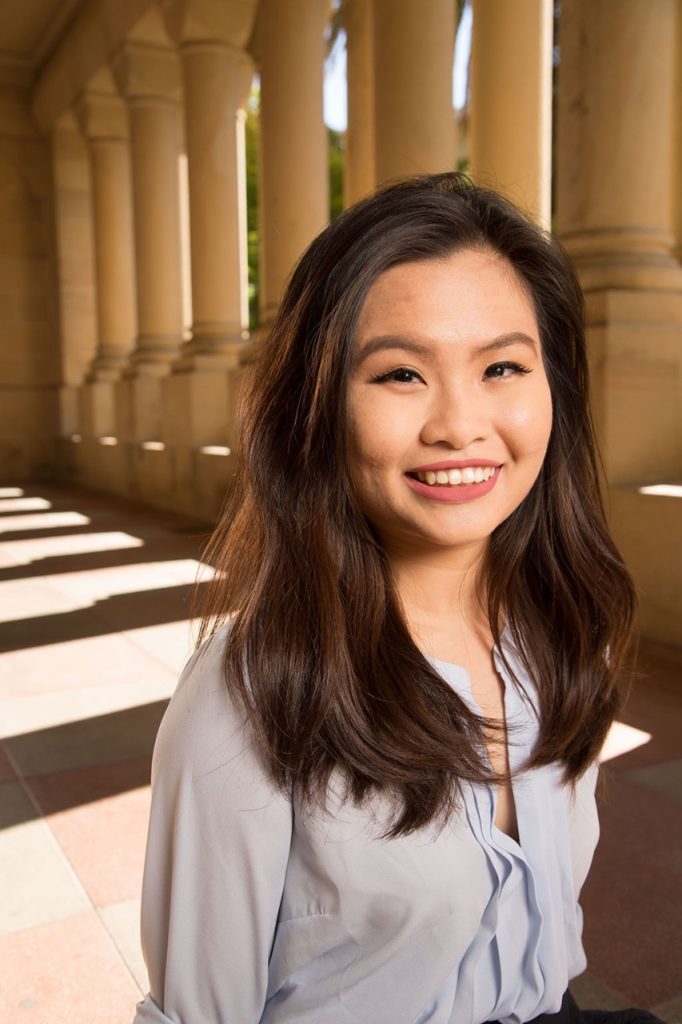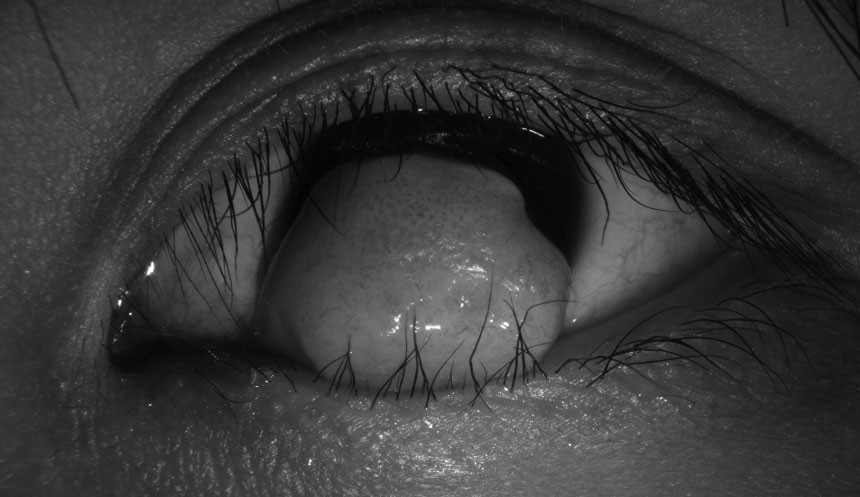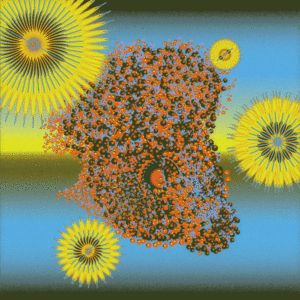A high-stakes surgery
Removing a tumor from a teen's eye

Midway through surgery to remove a tumor protruding from a teenager’s eye, Stanford ophthalmic surgeon Charles Lin, MD, worried how his patient would feel if he could not get it all out.
Nhu Nguyen, then 16, had been born in Vietnam with a dermoid tumor growing from her left eyeball. Although the small, pinkish lump was not cancerous, it partly blocked her vision. When Nguyen was 13, she and her family had moved to California to try to have it removed. At a San Jose hospital, the external part of the tumor was excised but the portion extending down into Nguyen’s eye was left behind.
Within a few months, the tumor grew back. It was much larger than before; Nguyen’s whole pupil was now blocked. She couldn’t close her eye, not even to sleep.
The surgeon who had performed the unsuccessful operation offered alarming advice: “She said the best option was to take the whole eye out,” Nguyen, now 20, says. “My mom could not agree.” Instead, she requested a referral to Stanford.
When Lin, a clinical assistant professor of ophthalmology, was brought onto the case by Stanford colleague Andrea Kossler, MD, assistant professor of ophthalmology, his first impression was that Nguyen was terribly withdrawn, even sullen. The teenager hid her left eye behind a thick mass of bangs and said very little.
Behind her quiet exterior, Nguyen was desperately wishing for her old eye back. The original dermoid, which had always been part of her body, had bothered her very little in comparison with the much larger regrowth. Was it futile to hope to have her eye fixed now? She wasn’t sure, and her English wasn’t yet good enough to explain her mishmash of emotions to the physicians.
Lin and Kossler sensed Nguyen’s desperation and wanted to help. They planned to operate as a team: First, Kossler would remove the external lump, then Lin would meticulously cut out its roots.
At the operating table in January 2014, Lin thought about all this as he sliced thin layers from Nguyen’s cornea, the clear structure at the front of the eye. The tumor went all the way through the cornea. He continued down into the sclera underneath.

“The tricky part is knowing when you’ve gotten all of it,” Lin says. At last, he was confident the abnormal tissue was gone. Since he had tunneled through the cornea, Lin also performed a corneal transplant.
After the surgery, Nguyen and the physicians waited anxiously to see if the tumor would grow back. This time, it didn’t.
As Nguyen’s eye healed, Lin watched her demeanor change, too. Today, he says, “She has this contagious, huge smile; it always makes my day.”
“It’s really changed my whole life,” Nguyen says of the surgery. Her memories of the months before her Stanford surgery are blurry, the result, she thinks, of her brain trying to block the traumatizing experience. “I had a lot of insecurity about my facial appearance, and having my eye fixed has really helped me feel better,” she adds. She’s transferring from a community college to San Jose State University this fall to study international business, which she hopes will lead to work with non-governmental organizations that improve others’ lives.
Nguyen recently brought two friends to a checkup, wanting them to meet her favorite doctors. “They were all very giggly and happy, laughing at inside jokes,” Lin said. “It was neat to see.”

